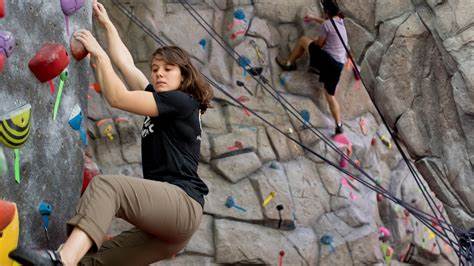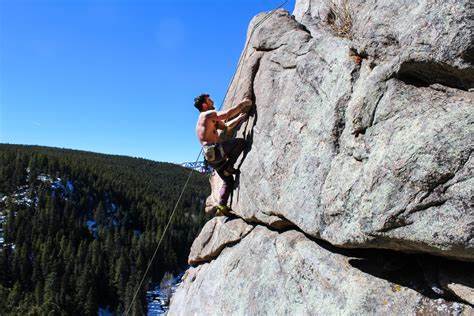Rock climbing is a thrilling and diverse sport that offers a range of styles and techniques to challenge climbers. Among the various disciplines, two popular forms stand out: traditional (trad) climbing and sport climbing. While both involve scaling vertical cliffs and pushing personal limits, they differ significantly in their approach and required skills. In this article Trad Vs Sport Climbing, we’ll delve into the world of trad and sport climbing, exploring their differences, advantages, and the unique experiences they offer. Whether you’re a seasoned climber or just starting your climbing journey, understanding these two styles will help you choose the path that suits your preferences and aspirations.
Trad Climbing
The Essence of Adventure Trad climbing, short for traditional climbing, embodies the essence of exploration and adventure. In this discipline, climbers place their own gear, such as cams, nuts, and hexes, into natural cracks and features of the rock to protect against falls. This means that the climber carries a rack of protective equipment and must possess knowledge of anchoring systems and route finding. Trad climbing demands technical skill, experience, and the ability to assess and mitigate risks in real-time. The reward lies in the freedom to climb on natural features and the satisfaction of conquering uncharted terrain.
Sport Climbing
Pushing Limits on Pre-Equipped Routes Sport climbing, on the other hand, focuses on pushing physical limits while climbing established routes. These routes are equipped with permanent bolts drilled into the rock, allowing climbers to clip quickdraws and ropes for protection. Sport climbing typically involves challenging overhanging routes and intricate movements, emphasizing strength, endurance, and technique. Unlike trad climbing, where gear placement requires careful judgment, sport climbers can focus more on movement and pushing their boundaries. Sport climbing offers a sense of progression as climbers aim to conquer harder grades and achieve personal bests.
Skills and Safety Considerations
Trad climbing demands a broad skill set, including traditional gear placement, anchor building, and efficient rope management. It also requires knowledge of natural features, route finding, and assessing the rock’s stability. Safety is paramount in trad climbing, as the climber’s gear placements directly affect protection against falls. Additionally, the ability to assess and manage objective hazards, such as loose rock or changing weather conditions, is crucial.
In sport climbing, climbers primarily focus on movement skills, technical proficiency, and physical conditioning. While safety is still vital, the reliance on pre-placed bolts simplifies the protection aspect. Sport climbers must understand proper clipping techniques and the use of quickdraws, as well as the importance of evaluating anchor systems and checking bolts for stability.
Read Also: Scaling New Heights Exploring the Thrilling World of Touchstone Climbing
Mental and Emotional Aspects
Trad climbing often presents a mental and emotional challenge due to the inherent uncertainties and risks involved. Climbers must make calculated decisions on gear placements, evaluate the rock’s quality, and manage fear and exposure. The reward lies in the deep connection with the natural environment and the sense of self-reliance and adventure.
Sport climbing offers a different psychological experience. With the assurance of pre-placed bolts, climbers can focus more on movement and physical performance. The mental aspects revolve around problem-solving, route reading, and pushing personal limits. The thrill comes from tackling challenging moves and achieving personal goals in a controlled environment.
Trad climbing and sport climbing are two distinct styles within the world of rock climbing, each offering its own set of challenges, rewards, and unique experiences. Trad climbing embodies adventure, self-reliance, and exploration, requiring technical skill and the ability to assess risks in a dynamic environment. Sport climbing emphasizes physical performance, pushing boundaries, and honing movement skills on pre-equipped routes. By understanding the differences between trad and sport climbing, you can choose the style that aligns with your goals, preferences, and desired level of adventure. So, whether you’re drawn to the freedom of trad climbing or the intensity of sport climbing, the vertical world awaits your exploration and ascent.



